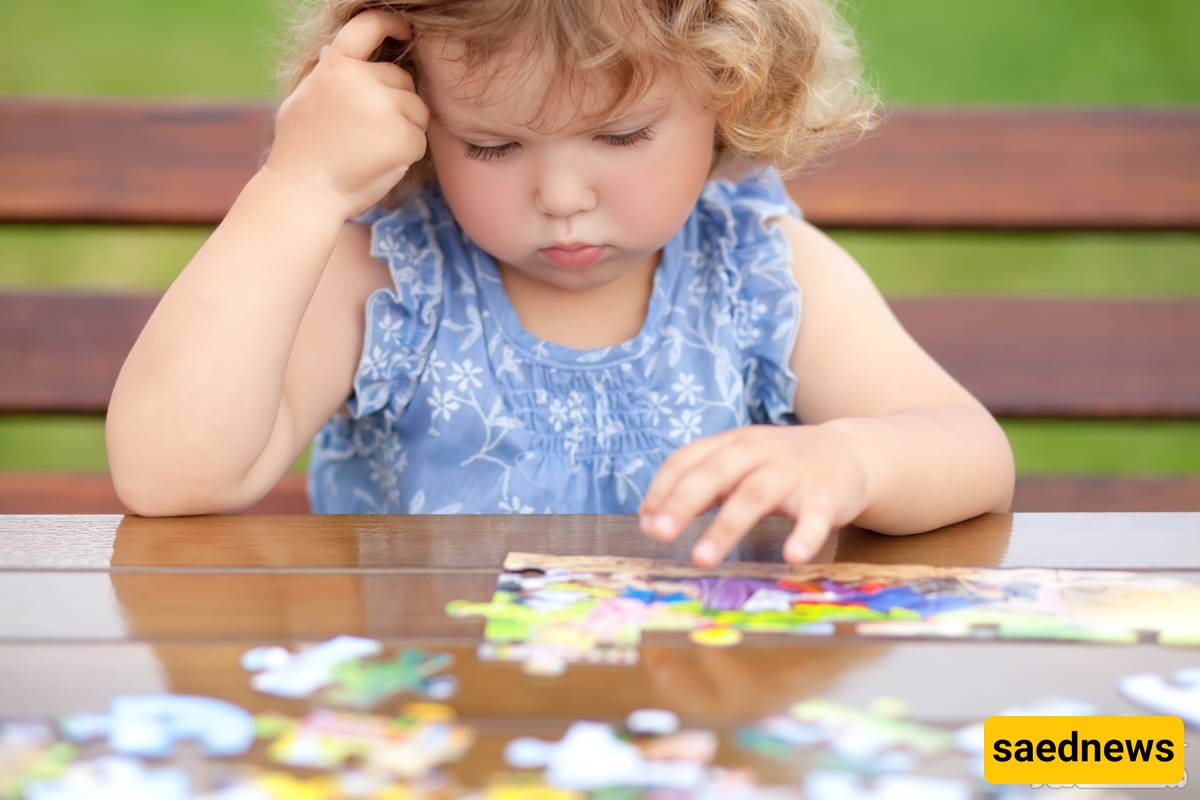Problem-solving skills form the foundation of all fields of knowledge, including mathematics, science, and the arts. Whether it’s a young child trying to figure out what caused a wet stain on the carpet or a scientist searching for a cure for cancer, both engage in the same thinking and problem-solving process.

Parents sometimes believe that childhood is a world free of problems and challenges. However, this is not the case. What empowers children to face their challenges is strengthening their problem-solving skills. Children, depending on their age, face various issues—problems such as friendship conflicts at school, rejection from peer groups, stress and anxiety about meeting family and teachers’ expectations, and many other daily situations that require skills to manage challenges. Therefore, to raise adults who can solve their own problems, we must prioritize this skill as an essential part of childhood development.

Benefits of Learning Problem-Solving Skills
Learning problem-solving skills helps children:
- Increase their creativity.
- Improve their math abilities.
- Boost their confidence in taking on new tasks.
- Develop leadership skills.
- Believe in their ability to solve problems independently.
- Handle issues and take care of themselves even when their mother is not around.
How to Teach Problem-Solving Skills
Problem-solving skills should be taught using a discovery-based educational approach, where children learn through questioning and exploration. Teaching problem-solving involves guiding children to find answers to puzzles, questions, and everyday dilemmas they encounter. This learning takes place both in individual and group exercises, with group projects being especially important for teaching discipline and teamwork.
Children should learn problem-solving through a structured and repetitive process. To achieve this, the following steps should be taken:

1. Recognizing the Problem
It is essential to train children to observe carefully. At the beginning of a game, for instance, encourage them to look at all the parts of the game, discover the relationships between the pieces, and understand the game’s objective. This habit helps them develop a clear understanding of problems in real-life situations as well.
2. Creating a Problem-Solving Environment
Children should know that making mistakes is okay and that they won’t be punished for it. They should also understand that their judgments and solutions are valuable, whether they are correct or not. Remember, the goal is to strengthen problem-solving thinking, which requires exploring all possible solutions. If your child gives an irrelevant answer, never mock them or laugh. Instead, encourage them to share their thoughts and take their ideas seriously. Supporting their creative solutions will increase their interest in problem-solving.
3. Allocating Time for Problem-Solving
Finding and testing solutions takes time. Trial and error is a crucial part of learning problem-solving skills. Set aside a regular period, such as weekend afternoons, to engage in problem-solving activities with your child.
4. Providing a Safe Space for Problem-Solving
Children should test their solutions in a safe environment, such as a sandbox or a garden, where they can experiment freely. Sandboxes are great places for challenges like digging tunnels or building ramps. Let your child use available objects to experiment. Involving other children of the same age can be beneficial, as social interactions help children engage in discussions to find solutions.
5. Supplying Necessary Tools
Children need opportunities to experiment with different methods and a variety of materials to work with. Flexible materials such as sand, water, blocks, and art supplies are ideal for exploring different solutions. These materials allow children to easily test their ideas and manipulate their resources in different ways.
Understanding the Problem-Solving Process
Problem-solving follows a logical process that children need to learn:
1. Identifying the problem
2. Finding different options (e.g., brainstorming)
3. Testing the options
4. Evaluating the outcome
Understanding this process helps children strengthen their problem-solving skills. You can model this strategy by explaining your thinking when solving problems yourself. Asking open-ended questions is also an effective way to guide children through this process.
Examples of Open-Ended Questions:
- How should this be built for it to work?
- What else could we do?
- What do you think will happen if we try this?
- What if you tried it yourself?
- Do you think there’s another way?
Selecting Appropriate Problems to Solve
Since children are naturally curious about their surroundings, finding suitable problems for them to solve isn’t difficult. Problems can involve understanding how the physical world or social interactions work.
Examples of physical-world problems:
- How do we balance a scale when adding weight to one side?
- How can we fill a bottle with water if it has a hole at the bottom?
- How do we tie shoelaces?
- How do we reach something on top of a cabinet?
- How can we dig a tunnel under a sandcastle without it collapsing?
Examples of social-world problems:
- How can we help a friend stop crying?
- How do we communicate with a friend who doesn’t speak our language?
- Who should we invite to our party?
Practicing Problem-Solving
When children encounter a problem, don’t rush to solve it for them. Instead, guide them step by step to find a solution. Offer advice when necessary, but encourage them to solve the problem independently. If they struggle to reach a solution, help them think through it, but do not directly tell them what to do.
Allowing Natural Consequences
Experiencing natural consequences can be a valuable lesson in problem-solving. If appropriate, let children face the outcomes of their choices in a safe environment.
For example, if your child spends all their money within the first 10 minutes at a park they love, let them experience the rest of the day without money. This will make them think more carefully about their spending decisions in the future. As a parent or educator, you can act as a guide, helping them make better decisions.
Guide, Don’t Interfere!
When children ask for help in solving a puzzle or a problem, resist the urge to give them the answer immediately. The goal of these activities is to train their minds to find solutions independently. In real life, parents should also allow children to solve some problems on their own rather than constantly intervening.
Encouraging Risk-Taking
Teaching problem-solving also involves encouraging children to take risks and try different approaches. Just like in real life, there may be multiple solutions to a single problem. If a child fails after trying one method, parents should encourage perseverance and support their willingness to test other solutions.
Being a Role Model
Children imitate their parents. If you, as a parent, try different methods to achieve the same goal, your child will learn that there are multiple ways to solve a problem. This applies both in games and real-life challenges, helping children develop problem-solving skills effectively.

